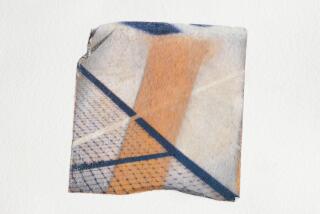Battle of the sexes on a tennis court
- Share via
WHEN it happened, 32 years ago, a lot of people were shocked that so many people were shocked.
After all, should anyone be surprised that one of the most highly ranked women’s tennis players in the world would easily defeat a 55-year-old man?
That’s what happened in Houston’s Astrodome on Sept. 20, 1973. Billie Jean King, in a setting more resembling Mardi Gras than a historic tennis match, soundly beat Bobby Riggs, 6-4, 6-3, 6-3.
New York Times sports columnist Selena Roberts’ book looks at that match from a distance of three decades and also at a lot that’s happened since in women’s sports.
King vs. Riggs was odd, quirky -- even a little goofy. A genuine sports event it wasn’t. It was a carny show. One comparison might be the 1976 farce in Tokyo when Muhammad Ali fought wrestler Antonio Inoki.
But the King-Riggs match became a blockbuster for reasons having more to do with gender issues than tennis. And Riggs, a mouthy onetime pool, golf and card room hustler (he was also the 1939 Wimbledon singles champion), packaged the match with his mouth and reeled in the multitudes with cracks such as these:
* “I’ll tell you why I’ll win. She’s a woman and they don’t have the emotional stability. She’ll choke.”
* “Women belong in the bedroom and the kitchen, in that order.”
So Mr. Original Male Chauvinist Pig set the table. ABC, after paying $750,000 for the telecast, served up Howard Cosell. ABC charged $50,000 for an advertising minute. Courtside seats were $100. The worldwide audience was 50 million. Astrodome attendance was 30,472.
Riggs, a small, crafty type -- and a Woody Allen look-alike -- was a dinker and a lobber. “The Lobber vs. the Libber,” read one button.
He was the oddsmakers’ favorite primarily for one reason. Four months earlier, in Southern California, Riggs had routed top-ranked Margaret Court, 6-2, 6-1, in 57 minutes.
Months later, King studied that match. Before the Court-Riggs match began, Riggs walked to the net and presented Court with roses. And Court ... curtsied.
“She shouldn’t have curtsied,” King said. “It was over. She should have smacked him over the head with them.”
And here Roberts tells you how Mr. Ultimate Male Chauvinist Pig became Mr. Ultimate Chump.
Riggs had a huge stake in winning. A Riggs-Chris Evert match was in the works if Riggs beat King. It was to be for a winner-take-all purse of $1 million.
But he was so confident after his easy victory over Court that he trained on wine, women and song. Seeing what was about to happen, Riggs’ son, Larry, was so disgusted with his father he refused to attend the event.
Roberts writes the Astrodome’s air-conditioning system wasn’t working properly that night and there was high humidity. King noticed during warm-ups that Riggs was sweating heavily.
King’s strategy was to burn up Riggs’ short, scrawny legs. Back and forth, back and forth she sent him. After she won the first set, Riggs looked ready for a stretcher. King won three sets handily.
The match is just past the book’s midway point. From here, Roberts ventures onto thin ice. She casts Billie Jean King as an indispensable 1970s crusader for women’s rights in sports. Because she beat an old man in a tennis match? The case isn’t made.
Roberts offers this portrait of college women’s sports in the 1970s: “At public universities like Arkansas, the budget for athletics was $2.5 million, none of it for women. Female athletes [had] to change into their uniforms in bathrooms rather than locker rooms. On some basketball teams, players practiced with one worn ball instead of a rack full of them. Women golfers at places like Georgia had to share six balls ... while men had buckets full on the range.”
Roberts tracks the progress of funding for women’s sports, dating from the 1972 enactment of Title IX. She effectively takes it to the point where Venus Williams is driving a Porsche before her 21st birthday.
A stronger choice for the role of champion of sports gender rights would have been the late Rep. Edith Green of Oregon, who wrote the legislation and guided it through Congress. On June 23, 1972, President Nixon signed the Education Amendments Act, which included Title IX.
That had far more to do with Venus Williams driving a Porsche before she was 21 than did Billie Jean King thrashing an old man in a tennis match.
Earl Gustkey, a former sportswriter for The Times, lives and writes in Bozeman, Mont.
More to Read
Go beyond the scoreboard
Get the latest on L.A.'s teams in the daily Sports Report newsletter.
You may occasionally receive promotional content from the Los Angeles Times.










